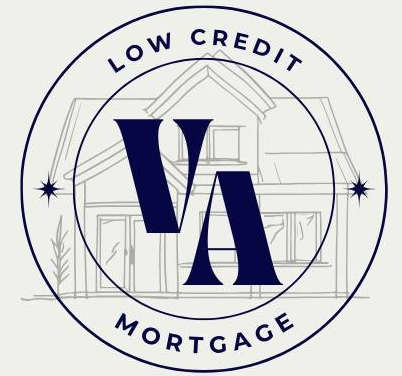The Complete Guide to Getting a VA Loan in 2025
A VA loan is one of the most valuable financial tools available to eligible veterans, active duty service members, and their families. As a government-backed mortgage option, it offers numerous benefits like no down payment, competitive interest rates, and relaxed credit score requirements. If you are looking to purchase a home in 2025 and are eligible for a VA loan, this comprehensive guide will provide you with all the information you need to understand the application process, benefits, eligibility criteria, and key updates in the VA loan program.
Table of Contents
1.What is a VA Loan?
2.Key Benefits of VA Loans
3.Eligibility Requirements for VA Loans in 2025
4.How to Apply for a VA Loan
5.VA Loan Limits in 2025
6.Credit Score and VA Loans: What You Need to Know
7.VA Loan Fees and Closing Costs
8.VA Loan vs Conventional Loans: A Comparison
9.Common Myths about VA Loans
10.Conclusion
1. What is a VA Loan?
A VA loan is a mortgage loan issued by approved lenders and guaranteed by the U.S. Department of Veterans Affairs (VA). Unlike conventional loans, VA loans do not require a down payment or private mortgage insurance (PMI), making them one of the most attractive financing options for qualified veterans and service members. VA loans are intended to help those who have served or are currently serving in the U.S. military achieve homeownership.
In 2025, VA loans continue to be an excellent choice for veterans, as the government has made several improvements to the program, including raising loan limits and providing greater flexibility for borrowers.
2. Key Benefits of VA Loans
VA loans are a unique financial product designed specifically for military personnel and their families. Here are the key benefits you can expect when applying for a VA loan:
•No Down Payment: One of the most significant advantages of a VA loan is that it requires no down payment. This feature allows eligible borrowers to purchase a home without having to save for a large upfront payment.
•No Private Mortgage Insurance (PMI): Unlike conventional loans, VA loans do not require PMI, which can save borrowers hundreds of dollars each month.
•Competitive Interest Rates: VA loans typically offer lower interest rates than conventional loans, making them an affordable option for homebuyers.
•Relaxed Credit Requirements: VA loans tend to have more flexible credit score requirements than conventional loans, making it easier for borrowers with less-than-perfect credit to qualify.
•No Prepayment Penalties: Borrowers can pay off their VA loan early without incurring penalties, which can help save on interest over time.
•Assumable Loans: If you sell your home, the buyer may be able to assume your VA loan, which can be an attractive selling point.
For more detailed information on VA loans, check out the official VA website.
3. Eligibility Requirements for VA Loans in 2025
Eligibility for a VA loan is determined by several factors, including your length of service, duty status, and discharge type. As of 2025, the basic eligibility requirements are as follows:
Active Duty Service Members
•Minimum service requirement: 90 continuous days of active duty during wartime, or 181 days during peacetime.
Veterans
•Minimum service requirement: 90 days of active duty during wartime or 181 days during peacetime.
•Discharge status: You must have been discharged under conditions other than dishonorable.
National Guard and Reserves
•Minimum service requirement: Six years of service in the National Guard or Reserves, or at least 90 days of active-duty service.
Surviving Spouses
•Eligibility: The spouse of a veteran who died in service or as a result of a service-connected disability may be eligible for a VA loan.
For more details on eligibility, visit the VA loan eligibility page.
4. How to Apply for a VA Loan
Applying for a VA loan involves several steps. Here’s a general overview of the process:
Step 1: Check Your Eligibility
Before starting the application process, confirm your eligibility. You can do this by obtaining your Certificate of Eligibility (COE) from the VA. The COE can be requested online through the VA’s eBenefits portal, or your lender can assist with this process.
Step 2: Find a VA-Approved Lender
Once you have your COE, it’s time to find a lender who participates in the VA loan program. Not all lenders offer VA loans, so it’s important to shop around for the best rates and terms. Many large banks, credit unions, and mortgage lenders offer VA loans.
Step 3: Gather Required Documents
To apply for a VA loan, you’ll need to provide documentation such as:
•Proof of income (pay stubs, tax returns)
•Proof of military service (your COE)
•Personal identification (Social Security number, driver’s license)
•Financial statements (bank statements, outstanding debts)
Step 4: Complete the Application
Submit your application to the lender and provide all required documents. The lender will review your financial situation, including your credit score and debt-to-income ratio, to determine your eligibility.
Step 5: Underwriting and Approval
Once your application is submitted, it will go through underwriting. If everything checks out, the lender will approve your loan and schedule a closing date.
Step 6: Closing the Loan
During the closing, you’ll sign the final documents and receive the funds to purchase your new home. You may be required to pay certain closing costs, but most VA loans allow the seller to cover these costs.
For step-by-step guidance on how to apply for a VA loan, visit the VA Home Loans page.
5. VA Loan Limits in 2025
In 2025, VA loan limits have been adjusted to reflect changes in the housing market. While VA loans do not have a maximum loan amount, there are limits on how much the VA will guarantee without requiring a down payment. These limits vary by county and are based on the conforming loan limits established by the Federal Housing Finance Agency (FHFA).
•High-Cost Areas: In certain high-cost areas, VA loan limits can be much higher than the standard loan limit.
•No Down Payment: If you are borrowing above the loan limit for your county, you may still be able to secure a VA loan with no down payment, but you may need to pay a portion of the loan amount over the limit.
To find the current loan limits for your area, check out the VA Loan Limit page.
6. Credit Score and VA Loans: What You Need to Know
While the VA does not set a minimum credit score requirement, most lenders will have their own standards. As of 2025, many lenders will look for a credit score of at least 620. However, some lenders may approve a loan with a lower score if other factors, such as your debt-to-income ratio, are strong.
It’s important to note that VA loans tend to be more forgiving of past credit issues than conventional loans. If you’ve had a bankruptcy or foreclosure in the past, you may still qualify for a VA loan if you can demonstrate stable income and responsible financial behavior since the event.
7. VA Loan Fees and Closing Costs
While VA loans come with many benefits, they are not completely free. Some of the fees associated with VA loans include:
•VA Funding Fee: This fee is typically 2.3% for first-time users and 3.6% for subsequent uses. The fee can be financed into the loan.
•Closing Costs: While VA loans do not require a down payment, you will still need to cover closing costs. These can include appraisal fees, title insurance, and other standard mortgage-related costs.
However, the VA does allow the seller to pay most or all of the closing costs, which can significantly reduce your out-of-pocket expenses.
For more on VA loan fees, visit the VA Loan Fees page.
8. VA Loan vs Conventional Loans: A Comparison
The following table compares key aspects of VA loans and conventional loans to help you decide which is the best option for you:
Feature VA Loan Conventional Loan
Down Payment 0% Typically 5%–20%
Private Mortgage Insurance (PMI) No PMI Required with less than 20% down
Credit Score Requirement Flexible, typically 620+ Generally 620+ to 740+
Interest Rates Lower than conventional loans Higher than VA loans in most cases
Loan Limits Varies by county Conforming loan limits set by FHFA
9. Common Myths about VA Loans
There are many myths surrounding VA loans that can discourage eligible borrowers from applying. Let’s debunk a few of them:
•Myth 1: VA loans are only for first-time homebuyers.
•Fact: Veterans can use a VA loan multiple times throughout their lives, as long as they meet the eligibility requirements.
•Myth 2: VA loans have high interest rates.
•Fact: VA loans typically offer competitive interest rates, and often lower than conventional loan rates.
•Myth 3: You can only use a VA loan to buy a primary home.
•Fact: While VA loans are primarily for primary residences, they can also be used to buy a multi-unit property, as long as the borrower lives in one of the units.
10. Conclusion
In 2025, the VA loan program remains a fantastic opportunity for veterans, active service members, and their families to achieve homeownership. With no down payment required, lower interest rates, and flexible eligibility standards, VA loans are an excellent choice for those who qualify. By understanding the application process, eligibility requirements, and key benefits of VA loans, you can take full advantage of this powerful financial tool to secure your dream home.
For more information on VA loans, be sure to visit the VA Home Loans page.
This guide was designed to provide you with the most up-to-date and comprehensive information on VA loans in 2025.

